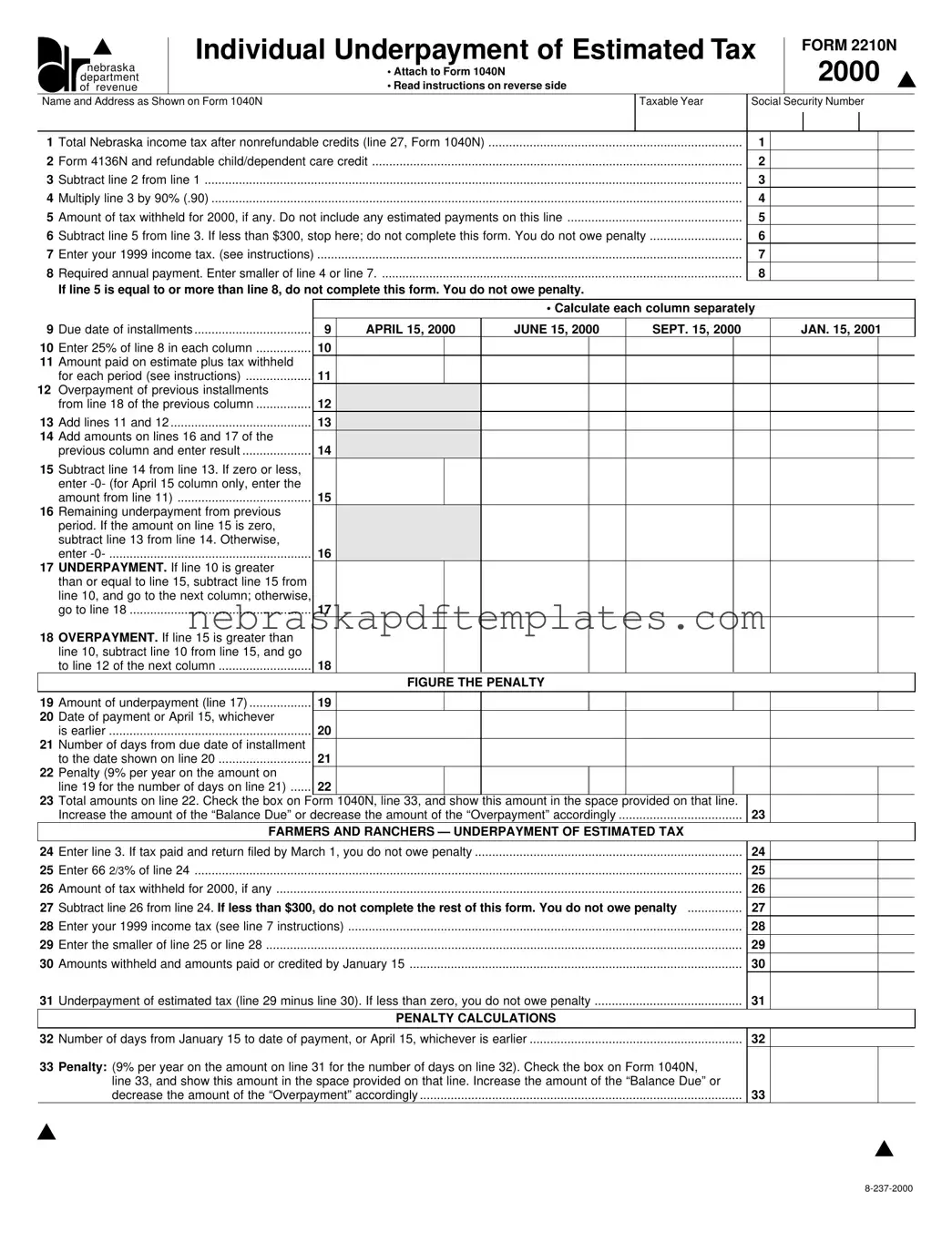Misconception 1: The Nebraska 2210N form is only for individuals who owe taxes.
This is not true. Even if you expect a refund, you may still need to file this form if you didn’t pay enough estimated tax during the year.
Misconception 2: You can ignore the 2210N form if you have withheld enough taxes at the end of the year.
Actually, the penalty can still apply if you didn’t pay enough estimated tax by the required due dates, even if you ultimately owe no tax when filing your return.
Misconception 3: Filing the 2210N form guarantees you will not face any penalties.
Filing the form does not automatically exempt you from penalties. You must still meet specific requirements regarding your estimated payments to avoid penalties.
Misconception 4: You can only use the 2210N form if you had a tax liability in the previous year.
This is incorrect. Even if you had no tax liability last year, you may still need to file if your tax due this year is less than $300.
Misconception 5: The penalty calculations on the 2210N form are straightforward and easy to understand.
Many find the calculations complex. It’s essential to read the instructions carefully and ensure accuracy to avoid mistakes.
Misconception 6: You must file the 2210N form with your tax return, regardless of your situation.
You only need to file it if you determine that you owe a penalty due to underpayment. If your tax situation is straightforward, you may not need it.
Misconception 7: The 2210N form applies only to regular taxpayers, not to farmers or ranchers.
Farmers and ranchers have specific rules that may exempt them from penalties if they meet certain income thresholds and file by a specific date.
Misconception 8: Completing the 2210N form is optional if you believe you will receive a refund.
It is crucial to complete the form if you determine you owe a penalty, as failing to do so can lead to additional penalties and interest.
